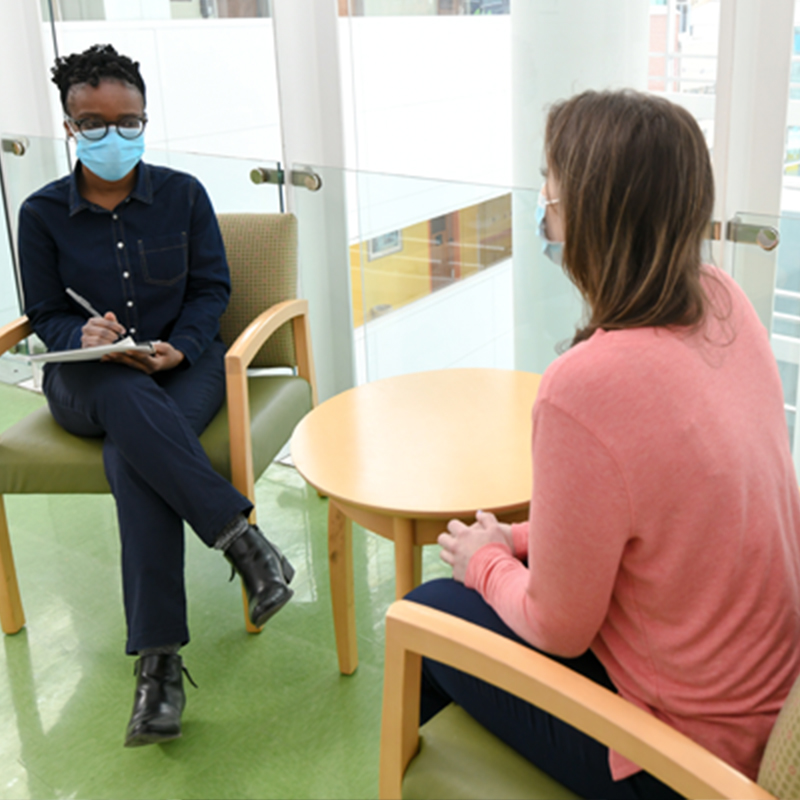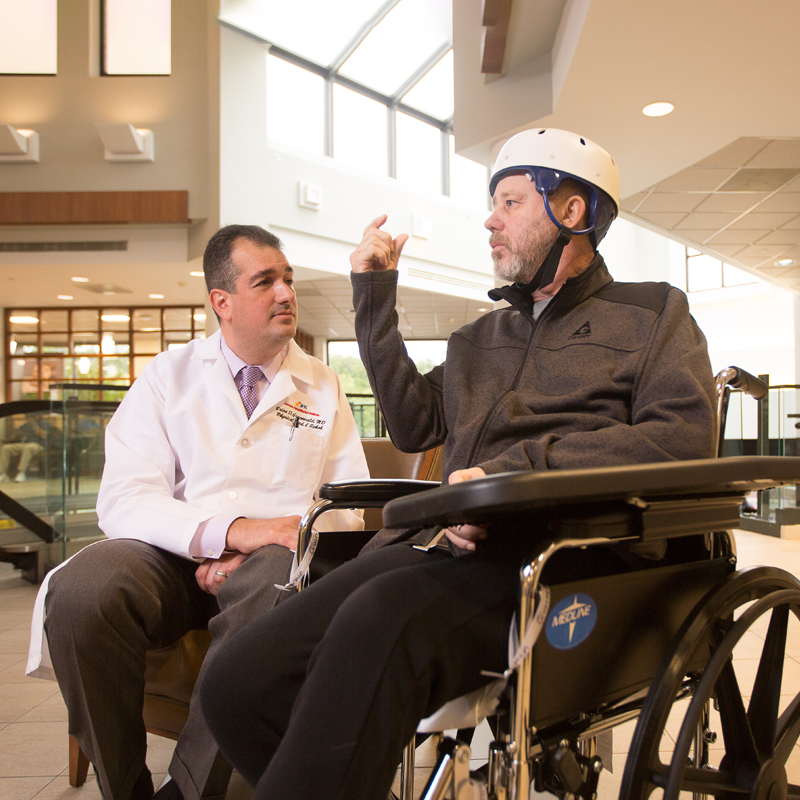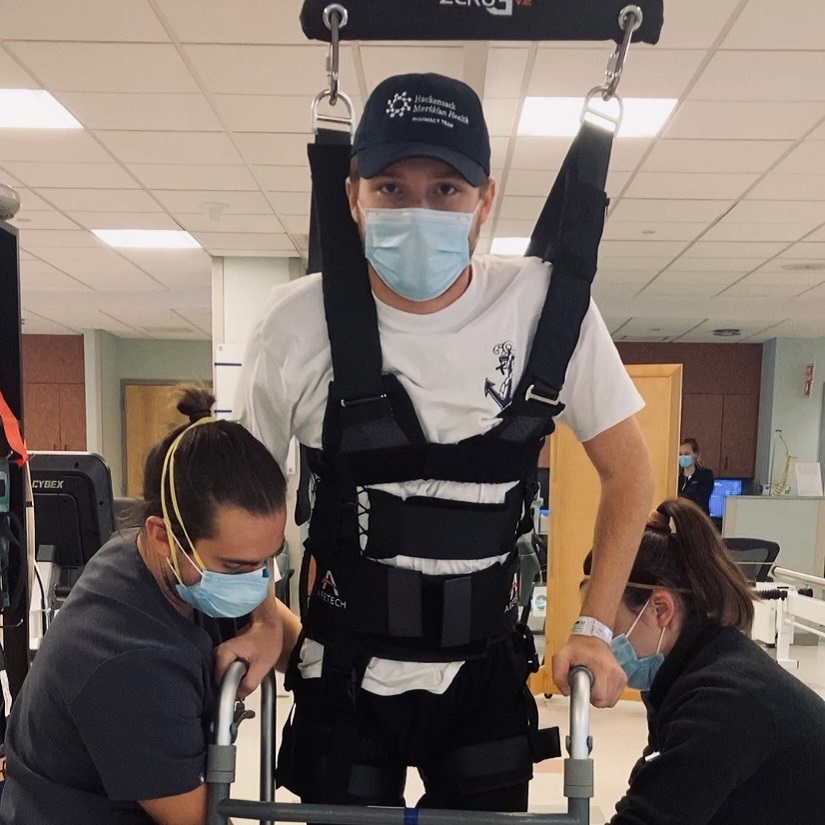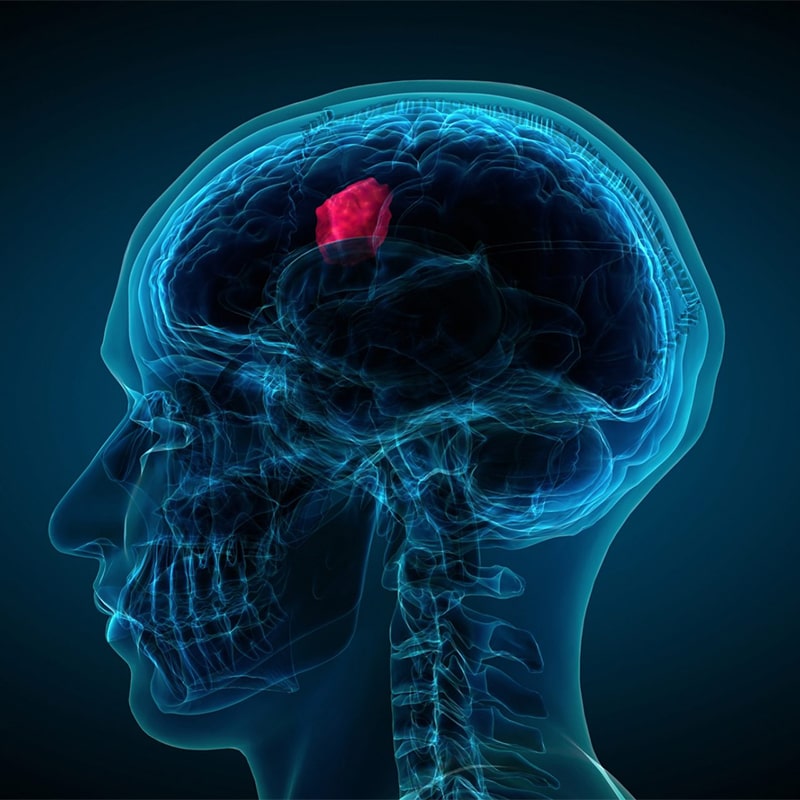IT Executive Returns to Work After Massive Injuries From a Burst Brain Aneurysm

September 21, 2021
On the morning of November 4, 2020, 59-year-old IT executive Ujjval Dixit was working from his home in Metuchen, New Jersey. He had a severe headache. Even though he never takes naps, he decided he needed one. On his way to bed, he spoke to his son, a volunteer EMT, who took a look at him and noticed he was having trouble with his speech. He immediately called 911.
When Ujjval got to JFK University Medical Center, the right side of his body was weak, and he was having difficulty walking and speaking. For the first time in his life, he was admitted to a hospital. An aneurysm in his brain had burst and was flooding his brain with blood.
Cascading Problems
Ujjval had a subarachnoid hemorrhage, which occurs when a weakness in the wall of a blood vessel in the space between the brain and the thin tissues covering the brain balloons out and breaks open, says Richard Malone, D.O., who specializes in the rehabilitation of brain-injured patients.
Ujjval got care just in time. The hospital’s interventional team rushed to close off the aneurysm by using a catheter to place a coil to the ruptured blood vessel in Ujjval’s brain. This allows a blood clot to form and prevents more blood from leaking out of the blood vessel into the brain.
After the coiling procedure sealed off the aneurysm, Ujjval developed hydrocephalus, a common complication of the type of aneurysm he had, says neurosurgeon Yevgenia Shekhtman, M.D.
Hydrocephalus is a condition in which the structures of the brain that normally absorb fluids are clogged, resulting in a buildup of fluid in the brain. That puts pressure on the brain and can lead to brain damage, Dr. Shekhtman says.
When Ujjval developed hydrocephalus, Dr. Shekhtman surgically inserted a drain in his head that allows fluid to drain from his brain into an external collection bag, which allowed the medical team to monitor and regulate the pressure in his head. The drain is removed if high pressure stops, but if it doesn’t, as in Ujjval’s case, a permanent shunt must be surgically placed. This shunt allows the fluid from the brain to drain into the abdomen and is a permanent medical device that requires no maintenance and can be adjusted outside of the body, says Dr. Shekhtman.
Remarkable Recovery
After nearly a month in the intensive care unit, Ujjval recovered enough that he could be moved to the inpatient rehabilitation department at JFK Johnson Rehabilitation Institute, where he had daily physical, speech and occupational therapy, says Dr. Malone, who oversaw Ujjval’s inpatient rehab.
Ujjval spent a month in inpatient rehab before he was able to go home and begin outpatient rehab with physical medicine and rehabilitation doctor Ofure Luke, M.D., and a multidisciplinary team of therapists.
In outpatient rehab, Ujjval continued with physical, speech and occupational therapy. Over time, the difficulties he had swallowing went away and he was able to transition from a thickened liquid diet to a regular one. He regained his balance and range of motion; and rebuilt his ability to connect the words in his head into sentences and into the sounds he needed to make in order to speak.
With the support of his family at home and the rehab team at JFK Johnson Rehabilitation Institute, Ujjval dedicated himself to his recovery. “The patient’s motivation and participation in the rehabilitation process are key components in recovery,” Dr. Luke says. “He worked really hard for his recovery.”
Ujjval finished with outpatient rehab in March 2021. In just less than three months, he regained his ability to eat, speak, do the tasks of daily living and move around. He is jogging and driving again and has returned full-time to work. He credits his family and the team of doctors, nurses and therapists who helped him for his recovery. “I cannot thank them enough for the work they did,” he says.
Next Steps & Resources:
Meet our sources: Ofure Luke, M.D., Richard Malone, D.O. and Yevgenia Shekhtman, M.D. To make an appointment with Dr. Luke, Dr. Malone, Dr. Shekhtman or a doctor near you, call 800-822-8905 or visit our website.
Learn more about rehabilitative care at JFK Johnson Rehabilitation Institute
The material provided through HealthU is intended to be used as general information only and should not replace the advice of your physician. Always consult your physician for individual care.

What Makes a Child Tic?
Frequent eye blinking, facial grimacing, shoulder shrugging, sniffling, repetitive throat clearing or uncontrolled vocalization; these are all symptoms of a tic. Our pediatric neurologist shares the most common questions parents ask surrounding their child’s tic.

Differences Between Stroke and Brain Aneurysm
Strokes and brain aneurysms are similar but not the same, says neurosurgeon Yevgenia Shekhtman, M.D. They both can cause severe damage — even death.



